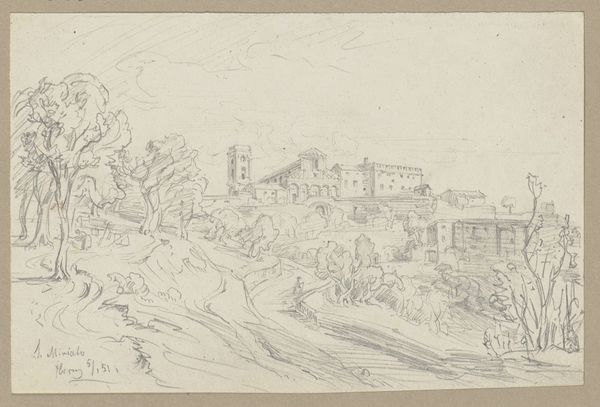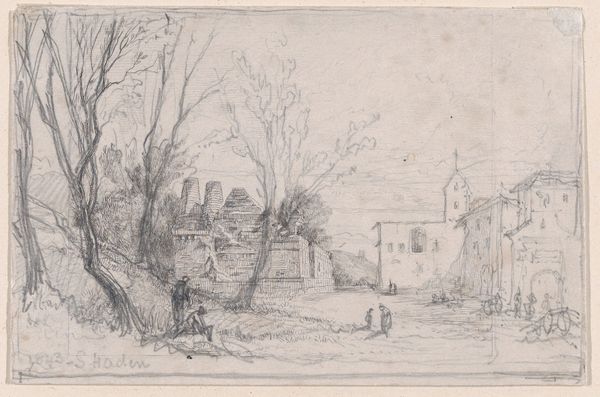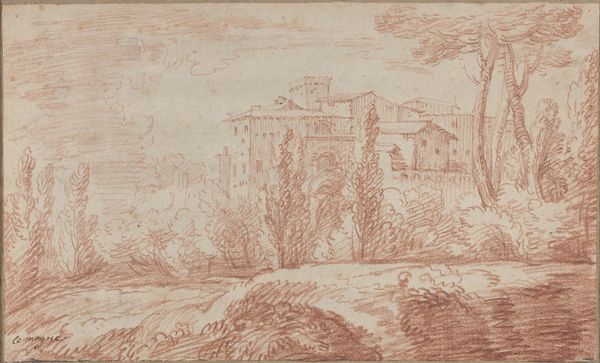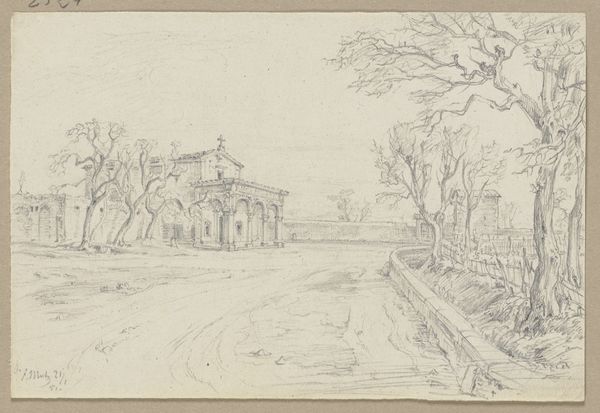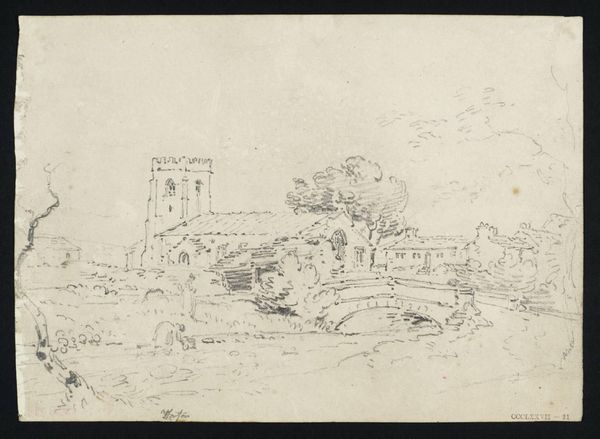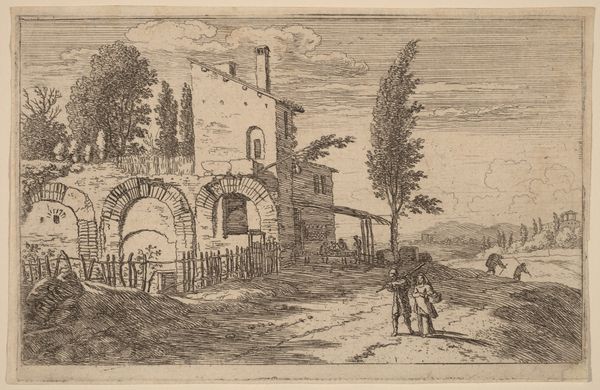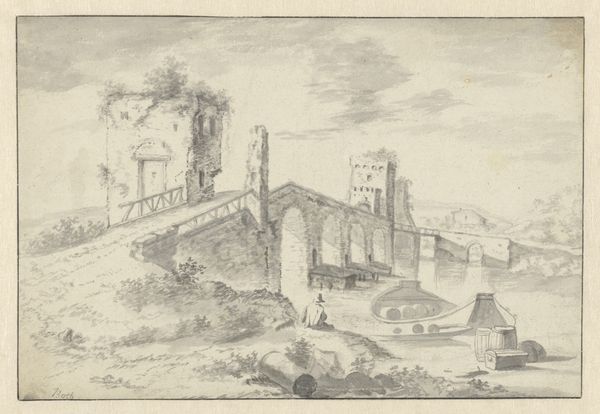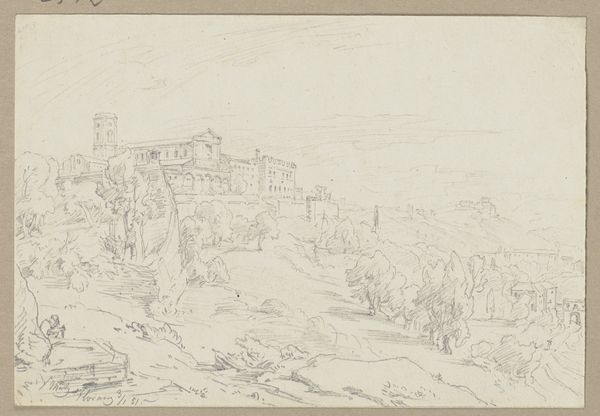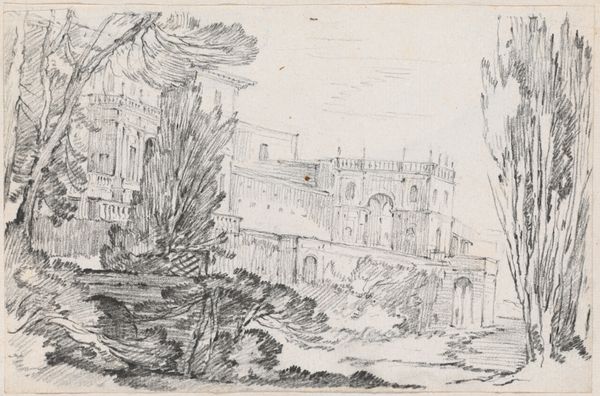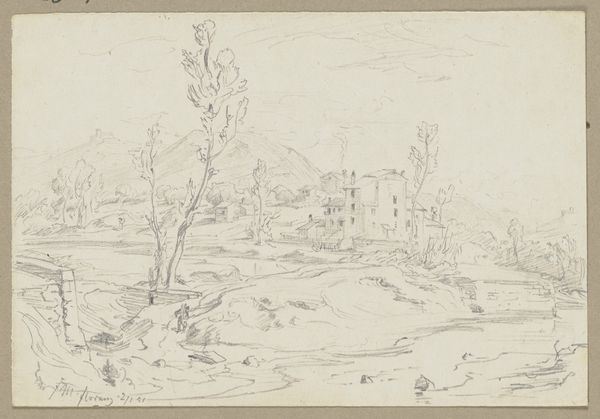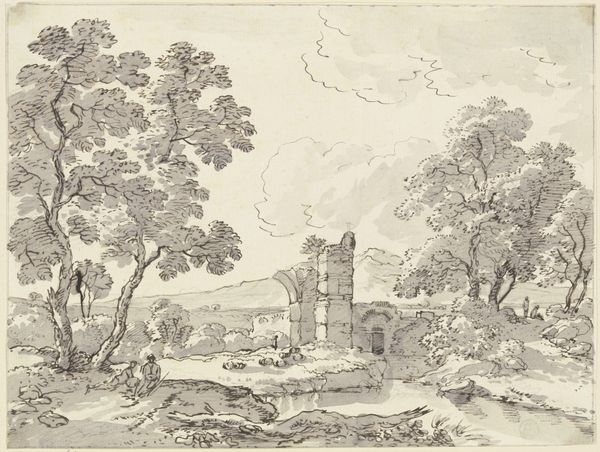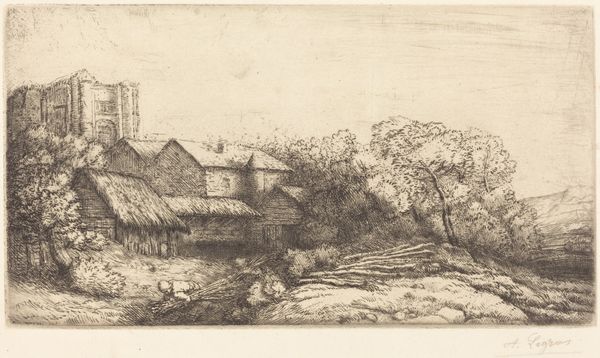
drawing, ink, pencil, architecture
#
drawing
#
16_19th-century
#
landscape
#
ink
#
pencil
#
architecture
Copyright: Public Domain
Editor: Friedrich Metz’s "Near Florence," created in 1851 with ink and pencil, presents an architectural scene that feels so peaceful and quietly contemplative. What social currents might have inspired such a serene image? Curator: Given the date, we must consider the broader political climate. 1851 sits amidst a period of significant social upheaval in Europe. While this drawing seems devoid of direct political commentary, it could be seen as a visual retreat from the rapid industrialization and political unrest of the time. The choice to depict a somewhat decaying structure invites us to think about how art can either reflect current socio-political tension, or offer some form of escape from those. Editor: That’s an interesting point. I had initially viewed the image as purely aesthetic, but placing it in its historical context sheds light on its potential significance. Are you suggesting that the ruins might symbolize something about that era? Curator: Precisely. Metz might be using architecture not just to illustrate it, but to suggest something about temporal permanence and social shifts. How do you think viewers might respond to that imagery? Editor: I would think the artwork might encourage a longing for a simpler time. It’s made me think differently about how landscapes interact with societal contexts. Curator: Exactly! And sometimes an apparently straightforward image is revealing profound values related to its contemporary society and politics. I never thought of landscape as an invitation to explore its political contexts until now!
Comments
No comments
Be the first to comment and join the conversation on the ultimate creative platform.
